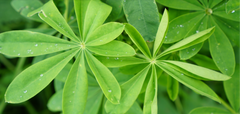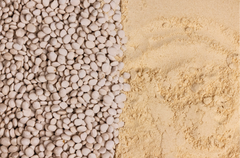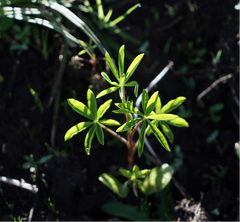
When it comes to regenerative farming, Chocho has got you covered.
If you know anything about Mikuna, you probably know that Chocho is an ancient legume that is packed with protein, fiber, amino acids, vitamins, and minerals. It’s a game changer for plant protein, but did you know that it has deep origins and a major impact on agriculture?
For thousands of years, Chocho has been used by Indigenous farmers in the Andes Mountains as a cover crop for harvests of primary crops like corn, quinoa, and potatoes.
So...what exactly are cover crops?
Cover crops are planted to...well...cover the soil, rather than to be harvested. This process is often used in a process called “crop rotation,” where different crops are planted sequentially on the same piece of land across several seasons. These crops positively affect soil quality, water, and biodiversity on farms. They reduce the soil’s reliance on one set of nutrients and make the land more resistant to weeds, pests, and diseases. Lastly, cover crops can cause an increase in crop yields for farmers resulting in more productive and fertile farming.
Today, these practices are often replaced with synthetic fertilizers and pesticides that can be harmful for the soil, the food, and the environment.
That’s where Chocho comes in.
In a 1997 study entitled “Response of Four Andean Crops to Rotation and Fertilization” by Mountain Research and Development at the United Nations University, four primary Andean crops—Chocho (the Andean lupine), quinoa, potatoes, and a root vegetable called melloco—were planted in various conditions to show the effects of each as a cover crop.
To sum up the experiment, these crops were planted in various orders over a series of several years in order to see which ones acted as the most healthy and high-yielding cover crops. (hint: Chocho was the winner!)
The study ultimately found that when planted directly after Chocho, the yields of quinoa, potatoes, and melloco were 40-188% higher. It’s an incredible reminder that Chocho has the potential to change regenerative agriculture as much as it has the potential to change the plant-based food industry.
The future of food and farming.
These results show how useful Chocho can be in more fruitful, regenerative farming. It’s solely rain-watered and doesn’t use any synthetic materials or pesticides. This powerful plant is creating positive change for farmers, for consumers, for the soil, and for the planet, and we’re excited to be a part of it. Let’s go Chocho!
Linked references for the Mountain Research and Development study can be found at https://www.jstor.org/stable/3673854?seq=1&cid=pdf-reference#references_tab_contents
Back to Journal


